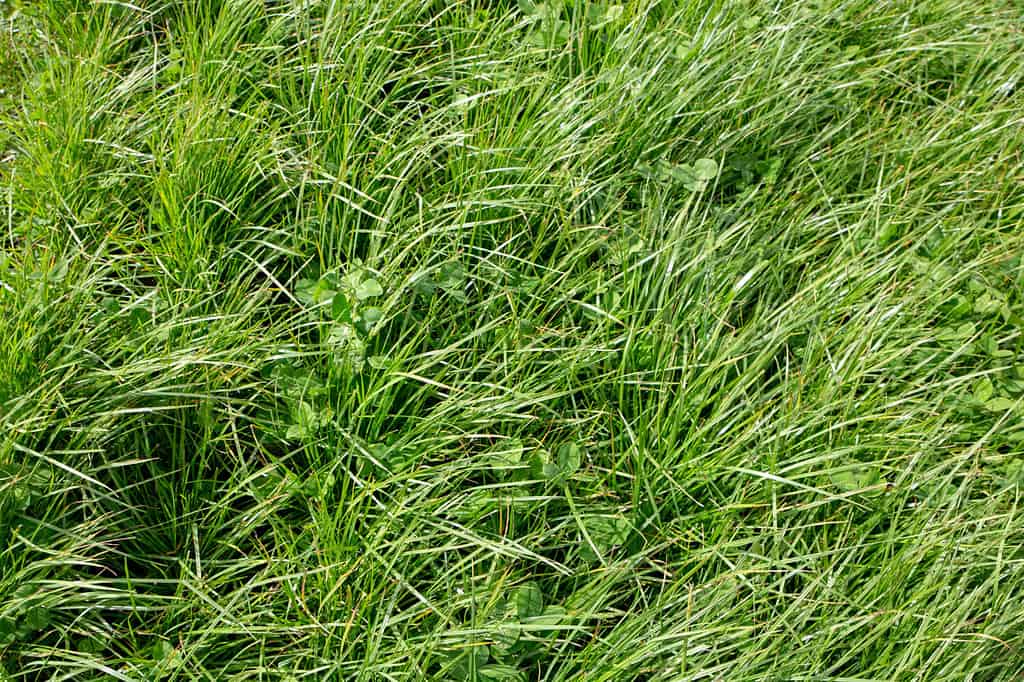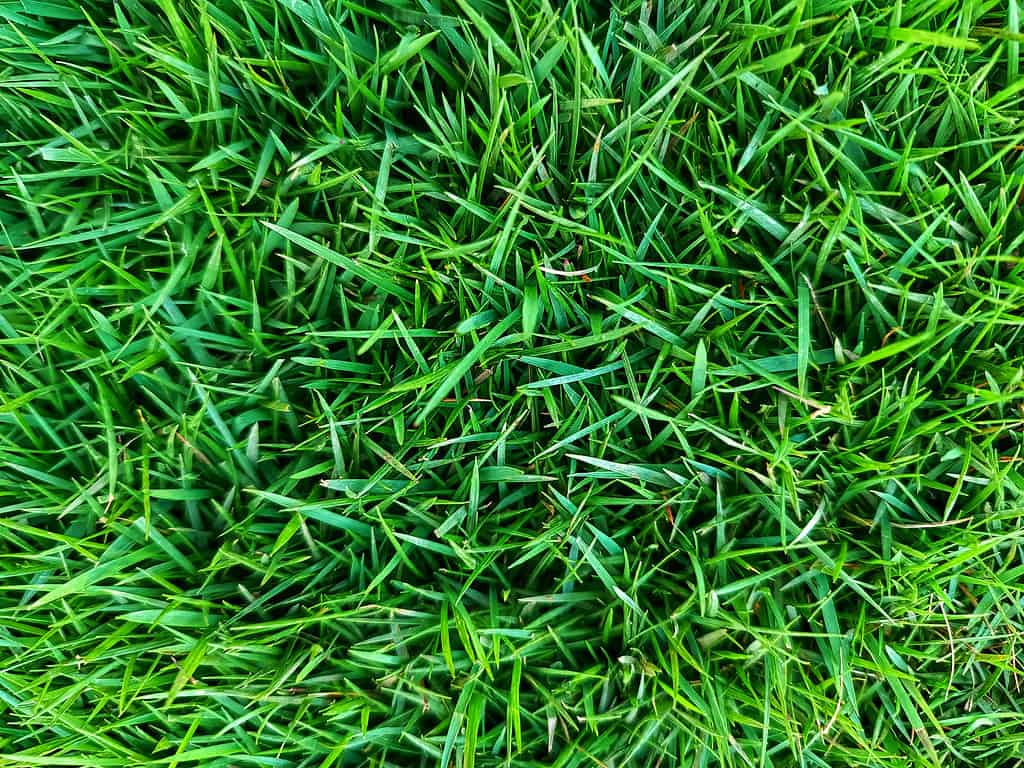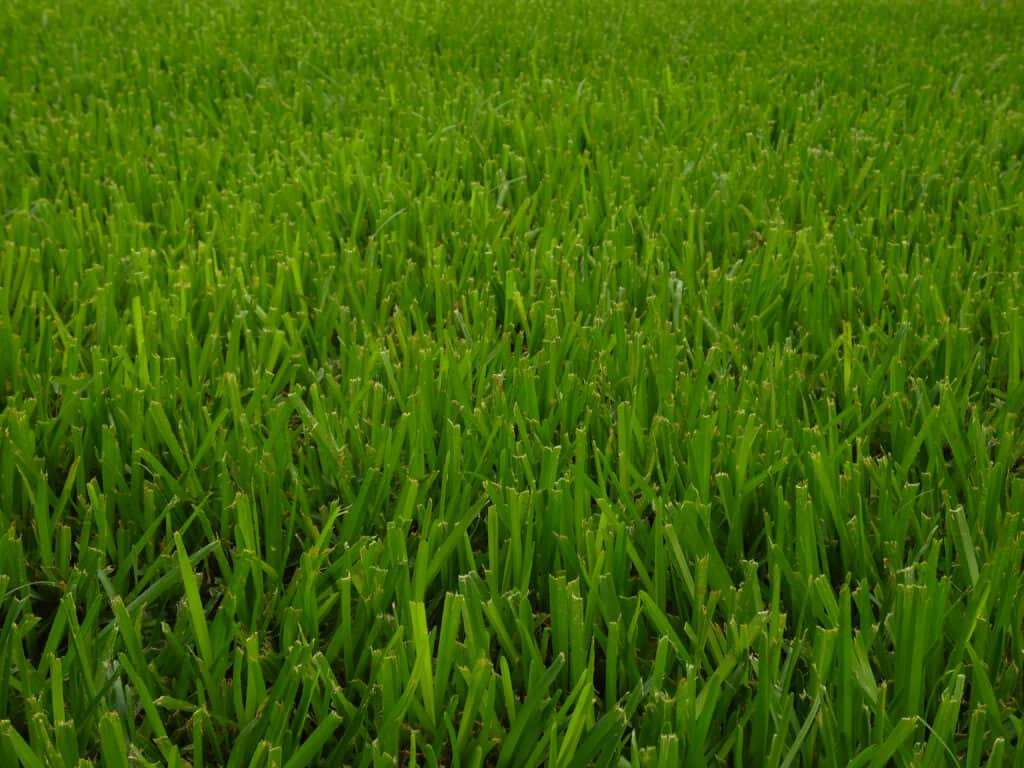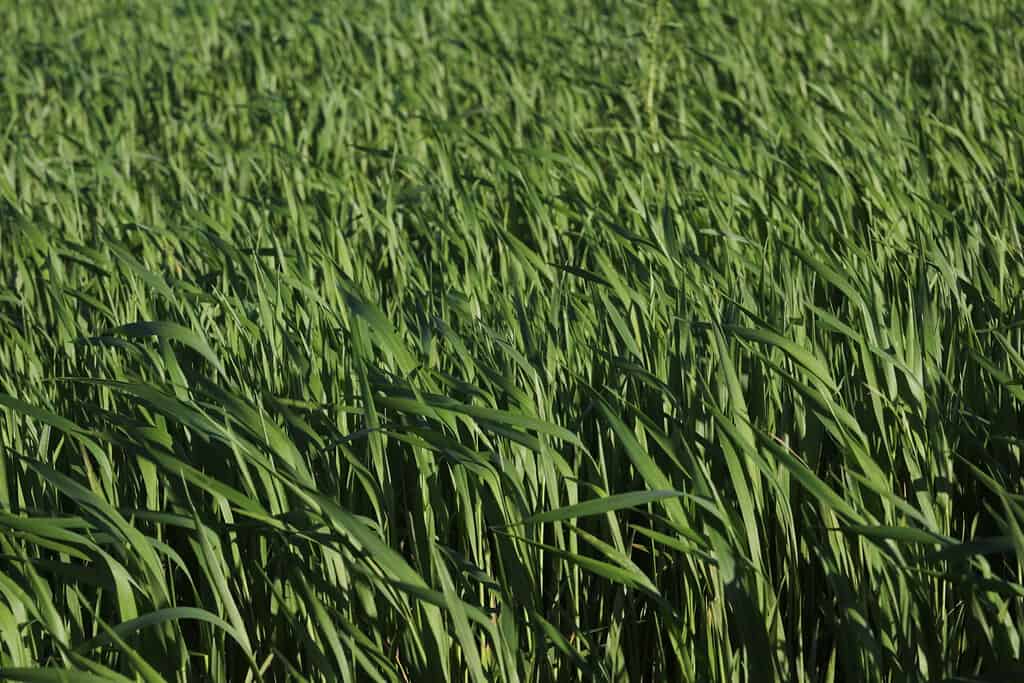You just bought a house in Oklahoma and you decide that you want to spruce up the backyard. Oklahoma land is mainly plain, and it’s in plant hardiness zones 6 through 8. What does this mean? It means that many plants you decide to put in your lawn have to be plants that like the sun, and are not water-hungry. Likewise, several grass types will be good for your back or front yard. The grass type that you choose has to be a precise one, that will make your yard more lively but will also not give you problems. Oklahoma doesn’t get a lot of rainfall, and it doesn’t get really cold in most of the state, so you have to know which grass types will do best for your yard. So let’s take a look at the seven grass types that thrive in Oklahoma yards.
Bermudagrass

This grass is tough and great for warmer climates like those found in Oklahoma.
©aimful/Shutterstock.com
Bermudagrass is a grass that you typically find in golf courses, athletic fields, or lawns with a lot of foot traffic. Bermudagrass is strong and has a lot of tolerance. The best part about this grass type is that it works best when it’s extremely hot and dry. The grass is strong and dense, which means that it could definitely last throughout the winter, as well. Its spread is usually done by stolons and rhizomes. You should water it regularly and mow the lawn weekly for best results.
Perennial Ryegrass

This type of grass is a fast-growing one that is perfect for moderate temperatures in Oklahoma.
©Sheryl Watson/Shutterstock.com
Perennial ryegrass is a grass that grows better during cooler seasons. However, if you live in an area where your yard is more shaded, this grass will do quite well. During summers, the grass usually goes dormant, but because it’s fast-growing, regular watering will provide the moisture it needs to grow back. Unfortunately, this grass can get hit with common grass diseases, so make sure to always look out for that.
Buffalograss

This type of grass has a blue-green color that will make your yard look more unique.
©doublelee/Shutterstock.com
Buffalograss is more of a warm-season grass, which means that it will thrive during the summers and heat waves that Oklahoma has. During winters, unfortunately, the grass will lie dormant. The bad news about buffalograss is that if you intend to have a lot of guests over, the grass won’t last. Furthermore, the grass spreads by stolons and it requires very low maintenance.
Zoysiagrass

This warm-season grass is tough and perfect for heavy-trafficked areas.
©iStock.com/HendSTD
Zoysiagrass is a dense grass that is tolerant to high traffic. This is a perfect grass for summer get-togethers, as it will last the entire season without any wear and tear. The grass is also tolerant to intensities — cold, hot, and even droughts. The grass spreads by below-ground rhizomes, but also by above-ground stolons. Lastly, you should maintain this grass with frequent fertilizing. Unfortunately for many Oklahomans out there, there is only one zoysiagrass cultivar available for commercial use in the state, and that is Meyer zoysiagrass (also known as Z-52).
Kentucky Bluegrass

Besides being a favorite in Kentucky, this grass is also used in parks, athletic fields, and other public places.
©iStock.com/KacieBuccieri
You don’t have to live in Kentucky to have Kentucky bluegrass. You can grow it in Oklahoma, right in your backyard. Of course, Kentucky bluegrass is more of a cool-season type of grass, so keep that in mind if you think you will have a spruced-up lawn in the summertime. Kentucky bluegrass is also tolerant during droughts and is a tough one, which means you can have a lot of foot traffic on the grass. Kentucky bluegrass spreads by rhizomes below ground.
St. Augustinegrass

With a medium-type texture, St. Augustinegrass is a warm-season grass.
©Xeres Zales/Shutterstock.com
St. Augustinegrass is a perfect type for the typical, dry Oklahoma summer. This is a favorite for Texas lawns and the southern areas of Oklahoma, too. St. Augustinegreass will do well in the hot sun, but also some shade. Just remember to water it regularly, so it grows quickly and abundant. Lastly, this grass is spread by stolons. Unfortunately, St. Augustinegrass can fall victim to common grass diseases, so be on the lookout for anything that looks off.
Tall Fescue

This cool-season grass is best for shaded areas where the sun won’t shine much.
©Joann_Pate/ via Getty Images
The best part about the Tall Fescue grass is that it is tolerant to heat, even though it thrives in cooler climates. It’s the perfect grass to put on your lawns in Oklahoma because it goes well in shaded areas and can look nice and green during winter, too. Make sure you water it constantly, as it requires constant irrigation. You should also mow it every few weeks to maintain it. Tall fescue has a bunch-type spread.
The photo featured at the top of this post is © leightrail/iStock via Getty Images
Thank you for reading! Have some feedback for us? Contact the AZ Animals editorial team.






